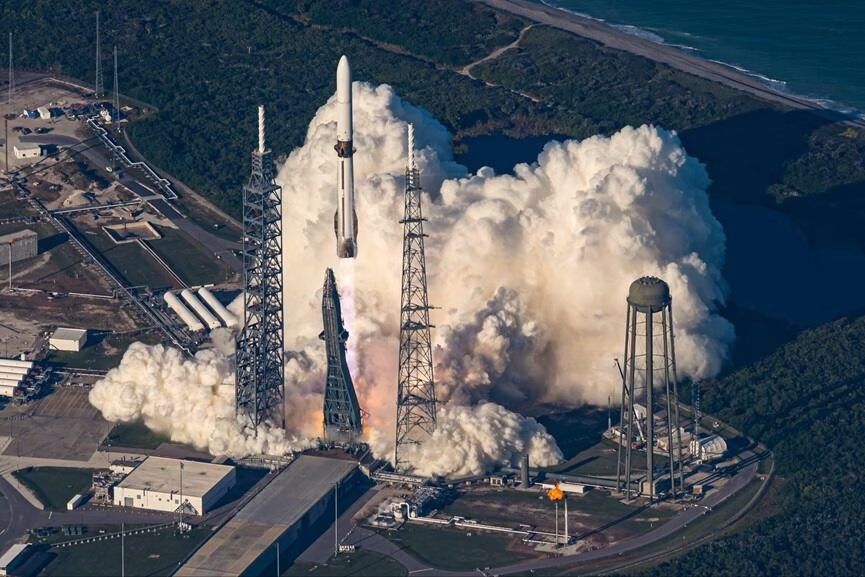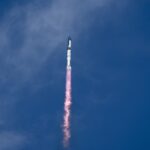Florida: Blue Origin’s New Glenn rocket completed its second mission with a successful launch from Cape Canaveral Space Force Station in Florida, sending NASA’s twin ESCAPADE satellites on their long journey to Mars. The rocket lifted off at 3:55 PM EST on Thursday, or 2:25 PM IST on Friday, and placed the two spacecraft into a planned loiter orbit.
The ESCAPADE mission, built by Rocket Lab and led by the University of California, Berkeley, will study how the Sun affects the magnetic environment around Mars. Scientists want to understand how the fast-moving stream of particles from the Sun, known as the solar wind, has slowly eroded the Martian atmosphere over time. This process is believed to have helped turn Mars from a once warmer and wetter planet into the cold desert world it is today.
The spacecraft will take about 10 months to reach Mars and is expected to arrive in September 2027. Once in orbit, they will become the first paired satellites to conduct a coordinated mission around another planet. Their science operations will begin in June 2028.
— Jeff Bezos (@JeffBezos) November 13, 2025
New Route Through Space
Since Earth and Mars are currently on opposite sides of the Sun, the satellites will not travel directly to Mars. Instead, they will first move to a location about a million miles from Earth known as Lagrange point 2. They will wait there until November 2026, when the planets are better aligned.
The mission will then use Earth’s gravity for a slingshot maneuver before heading toward Mars. This method allows missions to launch without waiting for the limited launch windows that normally appear every two years. It also makes ESCAPADE the first mission to pass through the far end of Earth’s magnetotail, a stretched region of the planet’s magnetic field.
— Jeff Bezos (@JeffBezos) November 14, 2025
Studying Mars in Stereo
Around Mars, the twin satellites will first fly in a line, one following the other, to study rapid changes in space weather. Later, they will shift into different orbits so scientists can observe how the solar wind interacts with Mars from two viewpoints at the same time.
The mission will also provide new information about the Martian ionosphere, an important region for future human communication systems.
Blue Origin also successfully landed the rocket’s reusable first stage on its recovery ship, Jacklyn. The mission included a Viasat demonstration that tested a new data relay system for NASA. New Glenn now has a growing list of commercial and government customers and continues progressing toward full certification for national security missions.

























